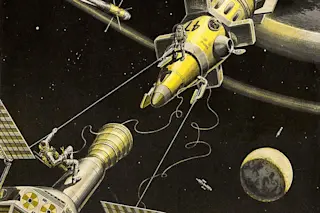Frank Tinsley's vision for what it would take to rope in a satellite in space. (Credit: American Bosch Arma/Frank Tinsley) The space race officially started in 1957 when the USSR launched Sputnik 1 into orbit around the Earth. This demonstration of technological prowess during the Cold War spurred US leaders in 1958 to transform the National Advisory Committee on Aeronautics into the agency we’re all familiar with: NASA. The newly minted agency needed to work quickly to reclaim the nation’s technological supremacy. NASA’s budget was increased to hire of the best scientists and engineers that money could buy. But NASA wasn’t the only red-white-and-blue pony running in the space race. Private companies in the Land of Liberty were motivated to research, design and sell their cutting-edge technology to NASA for its future space missions. The private sector had big, bold plans to turn the US into a space-faring nation — ...
5 Retro Space Missions That Failed to Launch
Discover the groundbreaking Atomic Pulse Rocket conceptualized for lunar travel, powered by atomic blasts, and its pivotal design features.
More on Discover
Stay Curious
SubscribeTo The Magazine
Save up to 40% off the cover price when you subscribe to Discover magazine.
Subscribe













